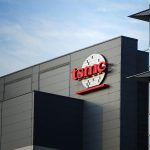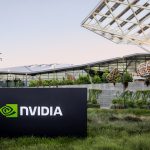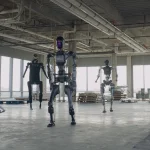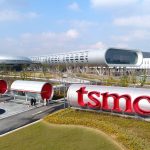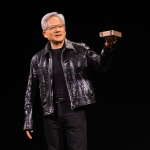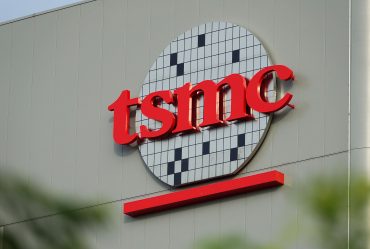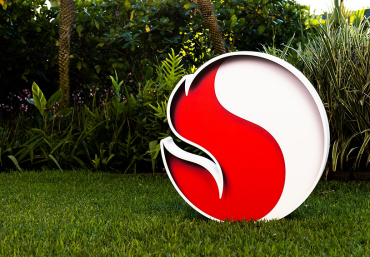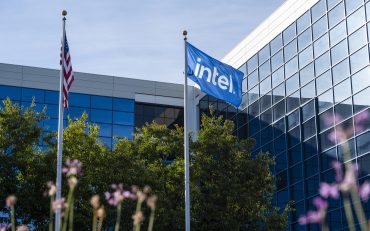
- Earnings
- Quantum & Chips
- Workforce
Intel Posts $2.9B Loss, Cuts to 75k Staff, Exits EU Mega-Fabs
6 minute read

Semiconductor giant Intel slashes global workforce and European investments amid deepening financial losses and AI competition
Key Takeaways
- Intel cuts workforce to 75,000 employees from 99,500 through layoffs and attrition, representing one of the largest tech restructurings in 2025
- GAAP net loss $2.9B (–$0.67 EPS); non-GAAP EPS –$0.10 on $12.9B in revenue (flat YoY, slightly above consensus). Data Center & AI +4% YoY; Foundry +3% YoY, but overall Intel logs sixth consecutive quarterly loss.
- Europe pullback: Germany “mega-fab” and Poland assembly/test canceled; Ireland layoffs (~200); Costa Rica ops shifted to Vietnam & Malaysia.
Introduction
Intel has entered full triage mode. The company reported a $2.9 billion GAAP loss in Q2 2025—its sixth straight quarter in the red—and unveiled one of the most sweeping restructurings in its history: headcount will fall to ~75,000 (from 99,500), European mega-projects are being scrapped, and capital spending on its marquee Ohio fab is being slowed. Revenue came in at $12.9 billion, flat year over year but slightly ahead of expectations, with non-GAAP EPS of –$0.10 missing the Street. New CEO Lip-Bu Tan’s mandate is blunt: “No more blank checks. Every investment must make economic sense.” The chipmaker battles mounting losses and fierce competition from rivals like Nvidia and AMD.
Key Developments
For the quarter ended June 30, Intel posted $12.9 billion in revenue (roughly flat YoY, modestly above consensus), a GAAP net loss of $2.9 billion (GAAP EPS –$0.67) and non-GAAP EPS of –$0.10, extending the company’s longest losing streak in at least a decade. While Data Center & AI grew 4% YoY and Intel Foundry 3% YoY, free cash flow remained pressured and the broader P&L stayed negative.
Intel’s restructuring targets both workforce and geographic footprint through a coordinated reduction strategy. The company achieves workforce cuts through layoffs and natural attrition, building on an earlier announcement of 15% staff reductions. Management layers have already been slashed by half this year as part of organizational streamlining efforts.
European operations face the most significant changes, with Intel terminating its planned “mega-fab” facility in Germany that would have employed 3,000 workers. The company also abandons an assembly and test facility in Poland designed for 2,000 employees. Assembly and test operations relocate from Costa Rica to expanded sites in Vietnam and Malaysia, affecting over 2,000 of Costa Rica’s 3,400 Intel employees.
The restructuring extends to Ireland, where Intel notifies the government of mandatory layoffs affecting up to 200 workers at its Co Kildare foundry. In the United States, construction of Intel’s $28 billion Ohio semiconductor plant faces further delays to align spending with market demand.
Market Impact
Intel’s market capitalization stands at $98.71 billion, dramatically smaller than Nvidia’s $4.24 trillion valuation, highlighting the competitive gap between the companies. The second quarter results show deepening losses, with Intel posting a $2.9 billion deficit compared to last year’s $1.6 billion loss.
Shares initially traded lower in after-hours as investors focused on the sixth straight loss and deep European cuts, before stabilizing on hopes that OpEx discipline and segment “green shoots” (DCAI, Foundry) might mark a trough. The equity story flips to cost-down/margin-up: the market will reward Intel only if it proves it can hit a leaner operating model while not missing another product/process node.
Revenue remained flat at $12.9 billion despite beating Wall Street expectations, as Intel missed analyst predictions for adjusted earnings. The company’s struggles contrast sharply with competitors who have capitalized on AI-driven demand for advanced semiconductors.
Some business segments show modest improvement, with Intel’s data center and artificial intelligence division growing 4% and foundry operations expanding 3% during the quarter. These gains provide limited encouragement amid broader financial challenges facing the company.
Strategic Insights
From capacity-first to survival-first: Tan is unwinding the “build-at-all-costs” IDM 2.0 ambition and replacing it with smaller, faster, cheaper. You can’t outspend Nvidia; you must out-execute yourself: the path back runs through node execution, defensible incumbencies (OEM PC, select networking), and foundry credibility — not grandiose fab announcements.
Europe loses a semiconductor anchor tenant: Intel’s retrenchment leaves a policy gap the EU will struggle to fill without richer, faster-deploying incentives. Customers should expect tighter, demand-driven capacity planning and more rigid product roadmaps as Intel preserves cash.
Expert Opinions and Data
CEO Lip-Bu Tan acknowledges the difficulty of recent decisions while emphasizing their necessity for long-term survival. “I know the past few months have not been easy. We are making hard but necessary decisions to streamline the organisation, drive greater efficiency and increase accountability at every level of the company,” Tan stated in an internal memo.
The CEO adopts a stringent approach to future investments, declaring “There are no more blank checks. Every investment must make economic sense.” According to Euronews, these measures represent Intel’s most aggressive restructuring in decades.
CFO David Zinsner explains the Ohio plant delays as necessary to “ensure spending is aligned with market demand,” reflecting the company’s new emphasis on demand-driven expansion rather than speculative capacity building.
Tan frames the workforce reductions as cultural transformation rather than simple cost-cutting. “We will become a faster, more agile, more vibrant company,” Tan said, arguing that removing bureaucracy will “empower engineers to innovate with greater speed and focus.”
Conclusion
Intel’s Q2 makes two truths unavoidable: there are real green shoots in DCAI and Foundry, and the company built for the last cycle can’t compete in this one without getting radically smaller and sharper. Tan’s plan is to buy time— by collapsing costs, killing non-core bets, and tying every capex dollar to demand — and then use that time to hit nodes, win real foundry customers, and ship competitive AI silicon. Whether that’s enough to close the Nvidia-sized canyon in front of it is the question the next few quarters will answer.
